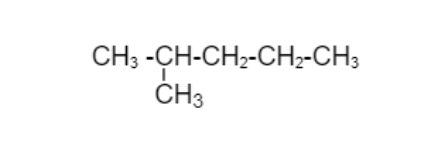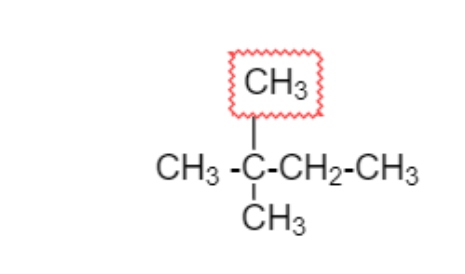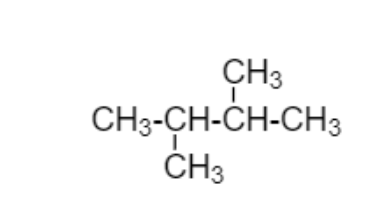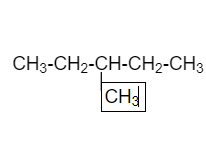
A hydrocarbon has the molar mass
A.five
B.six
C.four
D.ten
Answer
480.6k+ views
Hint: From the given question we know that molar mass of a hydrocarbon is
Complete step by step answer:
As we know from the hint the hydrocarbon has maximum of
Checking with molecular formula
Hence satisfy given molecular formula according to question and next step is chain isomerism
Chain isomers are molecules with the same molecular formula, but different arrangements of the carbon structure.
Now I’m drawing possibilities of chain isomerism of
Firstly I’m taking simple structure with straight chain
Hexane
Now just adding

2 -
Adding two

Here in below diagram straight chain is
I’m adding
diagram

In the below diagram straight chain is

Shown images are the number of possible chain isomerism so they are
Hence answer to this question is option ”A”.
Additional information:
A compound of hydrogen and carbon, like any of these which are the chief components of petroleum and gas
Chain isomerism
It is also referred to as skeletal isomerism.
The components of those isomers display differently branched structures.
Commonly, chain isomers differ within the branching of carbon
Scientists have tried to mathematically derive the amount of isomers of straight-chain organic molecules, called alkanes, but have discovered no simple relationships between isomer count and carbon content. However, computer programs that decompose alkane structures into manageable fragments give good results about alkanes:
Alkanes are chains of carbon (
Note:The above given structures are chain isomers to each other and if we want to draw any structure they will look the same like this five structure. It's mathematically impossible to calculate the number of isomers of alkanes, but computer programs use an algorithm to work it out.
Complete step by step answer:
As we know from the hint the hydrocarbon has maximum of
Checking with molecular formula
Hence satisfy given molecular formula according to question and next step is chain isomerism
Chain isomers are molecules with the same molecular formula, but different arrangements of the carbon structure.
Now I’m drawing possibilities of chain isomerism of
Firstly I’m taking simple structure with straight chain
Hexane
Now just adding

2 -
Adding two

Here in below diagram straight chain is
I’m adding
diagram

In the below diagram straight chain is

Shown images are the number of possible chain isomerism so they are
Hence answer to this question is option ”A”.
Additional information:
A compound of hydrogen and carbon, like any of these which are the chief components of petroleum and gas
Chain isomerism
It is also referred to as skeletal isomerism.
The components of those isomers display differently branched structures.
Commonly, chain isomers differ within the branching of carbon
Scientists have tried to mathematically derive the amount of isomers of straight-chain organic molecules, called alkanes, but have discovered no simple relationships between isomer count and carbon content. However, computer programs that decompose alkane structures into manageable fragments give good results about alkanes:
Alkanes are chains of carbon (
Note:The above given structures are chain isomers to each other and if we want to draw any structure they will look the same like this five structure. It's mathematically impossible to calculate the number of isomers of alkanes, but computer programs use an algorithm to work it out.
Recently Updated Pages
Master Class 4 Maths: Engaging Questions & Answers for Success

Master Class 4 English: Engaging Questions & Answers for Success

Master Class 4 Science: Engaging Questions & Answers for Success

Class 4 Question and Answer - Your Ultimate Solutions Guide

Master Class 11 Economics: Engaging Questions & Answers for Success

Master Class 11 Business Studies: Engaging Questions & Answers for Success

Trending doubts
Give 10 examples of unisexual and bisexual flowers

Draw a labelled sketch of the human eye class 12 physics CBSE

a Tabulate the differences in the characteristics of class 12 chemistry CBSE

Differentiate between homogeneous and heterogeneous class 12 chemistry CBSE

Why is the cell called the structural and functional class 12 biology CBSE

Differentiate between insitu conservation and exsitu class 12 biology CBSE




